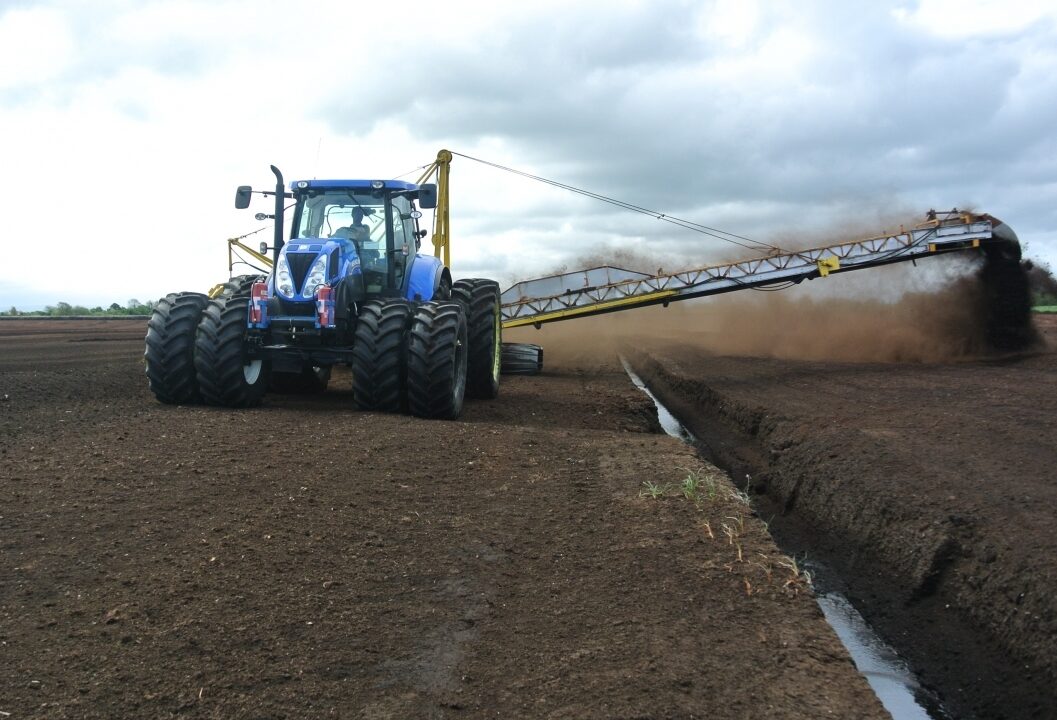The Government-supported closure of the country’s peat industry over the next 13 months will have “no direct impact” in offsetting Ireland’s carbon emission reduction target by 2030, it has been confirmed.
Clarification on this is likely to perplex the thousands of midlands families and small rural businesses still reeling from last week’s sudden announcement that two ESB peat-firing power stations (supplied with peat from Bord na Móna) will shutdown at the end of 2020 – 15 years earlier than promised under BNM’s initial decarbonisation plan outlined in 2015.
The loss of the large-scale Lough Ree Power Station located in Lanesboro, Co. Longford and the West Offaly Power Station located in Shannonbridge is expected to put more than 4,000 jobs – both direct and indirect – in the firing line throughout the region.
The decision was reached in line with Government goals to transition away from dependence on fossil-fuel energy and to accelerate moves towards a green, low-carbon energy economy.
Whilst acknowledging the frustrations of affected communities – many of whom have been involved the peat-harvesting industry for generations – the Government says it will create hundreds of new jobs in the midlands in the areas of retrofitting homes, bog rehabilitation, recycling and others.
Carbon market
However, it is worth pointing out that the action will not directly curb Ireland’s efforts to reduce its greenhouse gas (GHG) emissions targets – set by the European Union under its Effort Sharing Regulation – for 2030.
And the reason is as follows:
Since 2005, more than 11,000 power stations and industrial plants across the EU – including Bord na Móna – have operated under what’s called the EU’s Emissions Trading System – referred to as ‘EU ETS’.
The ETS feeds into EU policy to combat climate change and is considered “a key tool” for reducing greenhouse gas emissions in a cost-effective manner.
It operates under a ‘cap-and-trade’ system.
On the ‘cap’ side, the overall volume of GHG that can be emitted by the power plants, factories and other fixed installations covered by the EU ETS is limited by a cap on the number of emission allowances. The cap is reduced over time so that total emissions fall.
On the ‘trade’ side, companies can receive or buy emission allowances which they can also trade with one another as needed. After each year the company must surrender enough allowances to cover all its emissions, otherwise it will be hit with heavy fines.
According to the European Commission, the EU ETS has proved that putting a price on carbon and trading in it can work, as emissions from installations in the system are said to be “falling as intended”.
However, this system is completely separate from the binding annual GHG emission targets placed upon member states – including Ireland – for the next decade which covers all sectors that fall outside the scope of the EU ETS.
These sectors include: agriculture; transport; commercial; residential; and waste etc.
EU leaders have specified that all sectors of the economy not covered by the EU ETS must reduce emissions by 30% by 2030 compared to 2005 levels – based on “principles of fairness, cost-effectiveness and environmental integrity”.
Department response
In response to a query on how the closure of the peat industry will impact on Ireland’s carbon emission reduction targets for 2030, a spokesperson for the Department of Communications, Climate Action and Environment stated:
“The accelerated exit from peat will mean that at least 1.25 million tonnes of carbon will be saved each year and emissions will reduce by up to 9 million tonnes up to 2027.
These figures relate to electricity (ETS) sector so there is no direct impact on targets.
“But it is still important for long-term decarbonisation and objectives set out in the climate action plan,” the statement concludes.
